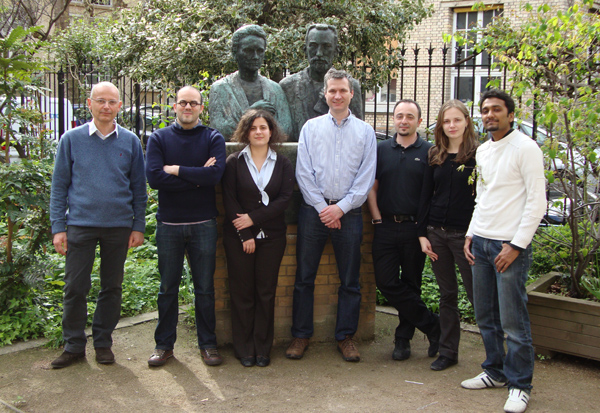The TEMPO synchrotron beamline (soft X-rays, 50-1500 eV) is dedicated to the dynamic study of the electronic and magnetic properties of materials. Available to users since January 2008, at present TEMPO is equipped with an experimental station able to perform X-ray photoemission and X-ray absorption spectroscopy experiments under ultra-high vacuum conditions (10-11 mbar, the ambient pressure being ~1000 mbar).
The TEMPO group, directed by Fausto Sirotti, has been collaborating since 1999 (at that time on the LURE SB7 beamline at Orsay) with the Functional Surfaces group in the Physical Chemistry Laboratory - Matter and Radiation (LCP-MR) at Université Pierre et Marie Curie (UPMC, Paris 6). This collaboration will be strengthened further in the next few months: a second photoemission spectroscopy set-up will soon be installed on the second branch of TEMPO beamline. This involves a project funded jointly with the Région Ile-de-France, ANR and the UPMC, for a total budget of 1.3 million euros. The LCP-MR group (Jean-Jacques Gallet, Fabrice Bournel, Rabah Benbalagh and François Rochet) specialized in Surface Chemistry, is heading this project in close collaboration with the TEMPO group.

This second experimental station will make it possible to measure photoemission almost up to “ambient” pressure (20 mbar). This performance can be achieved thanks to the high brilliance of synchrotron radiation. The new spectrometer will extend the scope of photoelectron spectroscopy to entirely new subjects, previously inaccessible to conventional spectrometers. These boundary conditions correspond to those encountered in industrial processes (catalysis, vapor phase deposition) and in environmental chemistry, where a key issue is the study of chemical reactions at the surface of ultra-thin water layers (the saturated vapor pressure of water being 25 mbar at room temperature). With its high-performance detection, this instrument will be able to follow surface reactions in real time.
Four staff and two PhD students at LCP-MR are involved in the process of setting up this new spectrometer, one of these students working part-time at SOLEIL. Finally, another PhD student is due to join the group in 2011 and will be entirely devoted on this project.
The tenders for choosing the hardware are about to go out, with the aim of having the instrument operational at the beginning of 2012.
The new facility will be a key factor in structuring the research on surface reactivity and environmental chemistry in Ile-de-France, and will attract a large community of French and foreign researchers to SOLEIL.
PHOTO :
The “Functional Surfaces group “ - from left to right, standing by the busts of Pierre and Marie Curie: Pr François Rochet, Dr. Rabah Benbalagh (research engineer, UPMC), Debora Pierucci (PhD student SOLEIL/UPMC), Dr Jean-Jacques GALLET (associate professor, UPMC), Dr. Fabrice Bournel (associate professor, UPMC), Héloïse Tissot (Master 2 student, UPMC), Anzar Khaliq (PhD student, UPMC).
